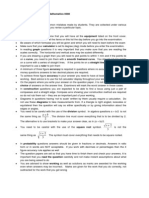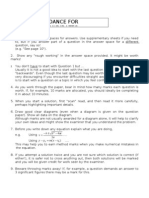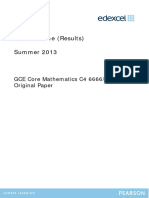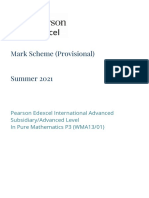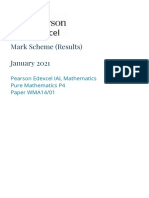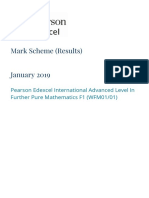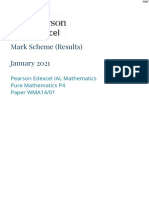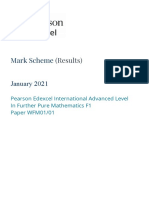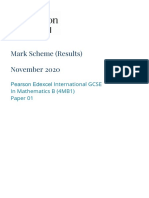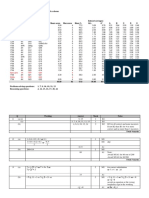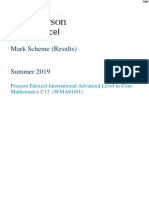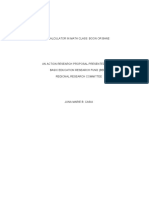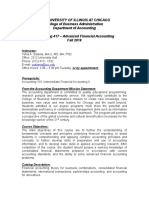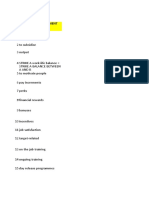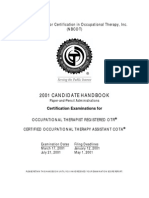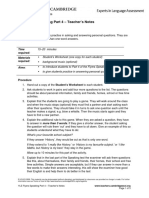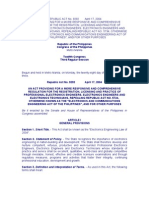• SPM Add Maths Paper 1
o Start from Q1-Q11/Q12
o Then Q22/23-Q25
o Then the rest
• SPM Add Maths Paper 2
o Start from Section C (answer the 2 easiest questions)
o Move to Section B (answer the easiest 4 questions)
o Continue with Section A
o If you have time go back to Section B & C to answer additional questions as back up
SPM ADDITIONAL MATHEMATICS:
Note: Starting from SPM 2021 onwards, there will be some changes to the examination format for
Additional Mathematics, but the tips here are still applicable. Additional Mathematics will continue to
be set bilingually in English and BM for SPM 2021 and beyond, and all students can still choose to
answer in English or BM.
1. Studying tips
- When your teacher is teaching in class, pay attention to what your teacher says. Make sure you
understand everything taught by your teacher. If you do not understand anything, ask your teacher or
friends.
- You need a reference book because the textbook alone is not enough. I recommend you to use the
Success Additional Mathematics SPM reference book by Oxford Fajar.
- When studying a chapter for the first time, read through the notes in the reference book. Make sure
that you understand the concept for that chapter and relate them to what your teacher had taught in
school.
- You need to know how to apply what you have learnt to solve questions. Go through all the example
questions in the revision book. Make sure that you understand how every question is solved.
- Then, you have to do a lot of exercises. Buy exercise books from the bookshop. You can start by
doing topical questions topic by topic. When you have understood all topics, proceed with doing SPM
model test papers, past year SPM trial questions and past year actual SPM questions. They should
be available from bookshops. After doing the exercises, refer to the suggested answer or mark
scheme and do self marking.
- You should sometimes refer to the mark scheme of past year SPM trial papers to find out how every
question is marked and which steps need to be shown for every question. Usually, the same types of
questions will have similar mark scheme, so this can help you when answering exam questions.
- When doing revision before exam, you should go through the example questions for all chapters in
the reference book. If you have forgotten the concept for any chapter, go through the notes in
reference book for that chapter again. You should also do some SPM model test papers or past year
papers.
- The Additional Mathematics topics may require knowledge and understanding of the Mathematics
topics. Make sure that you understand all the topics in SPM Mathematics.
2. Paper 1
- It is not compulsory to show the workings. If your final answer is correct, full marks will be given and
the workings will not be marked. However, you are strongly advised to show all workings. If your final
answer is wrong but some of your working is correct, the workings will be marked and you may still be
given some marks.
3. Paper 2
- (Existing format for SPM 2020 and earlier) There are Section A, Section B and Section C. Section A
consists of 6 questions where you must answer all questions, Section B consists of 5 questions where
you can choose any 4, while Section C consists of 4 questions where you can choose any 2. You can
answer extra questions in Section B and Section C if you have time. The examiner will mark all
questions and choose the questions where you score the highest marks. (New format from SPM 2021
onwards) There are Section A, Section B and Section C. Section A consists of 7 questions where you
must answer all questions, Section B consists of 4 questions where you can choose any 3, while
�Section C consists of 4 questions where you can choose any 2.
- You must show all workings for every question. You should not skip any important steps. You do not
need to write down the formula used to solve the question. The number of marks allocated for a
question usually shows the amount of working needed. 1 mark will be given for each important step
and the final answer. If you do not show a particular important step, marks will not be given for that
step. Marks can still be given for all other steps and the final answer if they are correct. Correct
answer without working usually scores only 1 mark. If your final answer is wrong but some of your
working is correct, you may still be given some marks. However, you do not need to show any
working for 1 mark questions.
4. Both Paper 1 & Paper 2
- When answering, read the question and information given carefully. For questions involving
diagrams, mark any important details on the diagram. For some questions without diagram,
sometimes it may be helpful to draw a diagram so that you can illustrate the information given in the
question. Apply what you have learnt in mathematics in order to solve the questions and get the
answer. Use the correct concept or formula for every question. Certain formula are provided in the
first few pages of the question paper, refer to them if necessary.
- You are allowed to write extra solutions or answers. Marks will only be given for the correct
answers/solutions, and marks will not be deducted for wrong answers/solutions. When copying figures
from the question or from your answer for the previous part of the question, be careful not to copy
wrongly.
- For a part of question which requires you to use your answer from the previous part, even if your
answer for the previous part is wrong and you use it for this part, causing your answer for this part to be
wrong, you will still get the working marks for this part as long as your calculation for this part is correct,
but you will usually lose the answer marks for this part.
- If the question does not state that you must or you cannot use a particular method, then you can use
any suitable method to solve the question. You can also use methods that are learnt only in STPM / A
Level or higher level, if you know them. If the question states that you must use a particular method,
then you can only that method to solve the question. If the question states that cannot use a particular
method, then you cannot that method to solve the question.
- If the final answer is a number with infinite decimal places, you should round up to at least 4
significant figures. You can also write your final answer as a fraction if possible. However, if the
question states that you must express your answer as fraction or decimal, then you must follow the
instruction. If a number with infinite decimal places is involved in between the workings, you should
take at least 4 decimal places (4 significant figures is not sufficient) to ensure accuracy of the final
answer. Otherwise, marks can be deducted if the final answer is less accurate.
- For questions involving Pi, the question may ask you to use Pi = 3.142. In that case, you cannot use
Pi = 22/7 or the value of Pi from the calculator. You must also follow other instructions given in the
question. After you have answered all questions, you should recheck your answers for mistakes.
Leave at least 15 minutes to recheck your answers if possible. When rechecking, use a different
method to solve the question or directly use the calculator if possible


